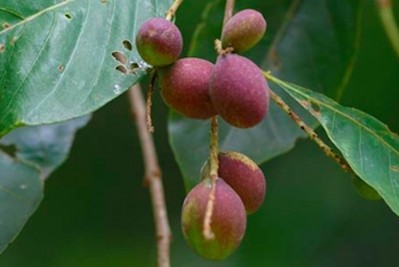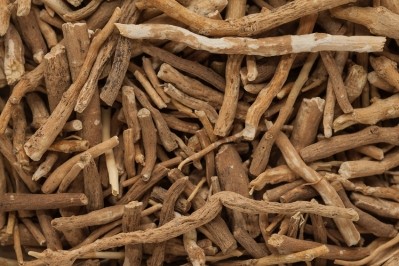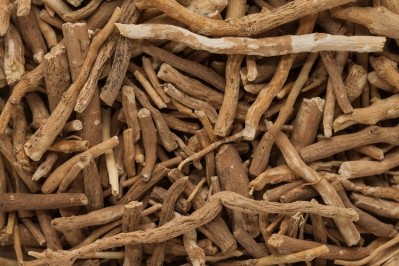Ashwagandha root and leaf extract quells knee pain in study

As 2016 wraps ashwagandha joins a host of botanical ingredients whose lists of indications continues to grow. Ashwagandha has been revered in the Indian Ayurvedic medical pantheon as a powerful adaptogen, helping to maintain a healthful homeostasis in the body. While that is a helpful property, to Western eyes it could also appear to be a snake oil-type claim, i.e. this stuff is good for what ails ya. Ashwagandha has been mentioned in connection with beneficial effects for those who have trouble sleeping, suffer from anxiety, complain of arthritis, endure difficult menstruation and a number of other conditions that cross over into disease claim territory (Ayurvedic medicine practitioners are not bound by the regulations that hem in claims on dietary supplements in the US market). But to Western eyes, many of these indications lack the kind of evidence that brings clarity and can help support structure/function claims on dietary supplements.
Bridging the evidence gap
Natreon has sought to address this gap with a study conducted in India that was published in the Journal of Ayurveda and Integrative Medicine. Researchers from Nizam’s Institute of Medical Sciences in Hyderabad conducted a randomized, double-blind, placebo-controlled study on 60 subjects with a mean age of about 58 who suffered from knee pain. The study cohort consisted of 43 males and 17 females who were divided into three groups that took either a placebo or a capsule containing either 125mg or 250 mg of Sensoril twice daily. The effects of the intervention were measured at 4, 8 and 12 weeks and were compared to baseline values. The effects were scored using Modified WOMAC, Knee Swelling Index (KSI), Visual Analogue Scale (VAS).
at baseline and at the end of 4, 8, 12 weeks.
“Both the doses of an aqueous extract of W. somnifera produced significant reduction in outcome variables, with the 250 mg group showing significantly better response. In addition, the therapeutic response appears to be dosedependent and free of any significant GI disturbances,” the researchers concluded.
According to Dr. Aparna Kalidindi, Pharm D, who is the manager of technical sales and marketing for Natreon, Sensoril’s multifaceted effects are the result of different bioactives within the botanical.
“The different modes of action can be attributed to different active components of Sensoril Ashwagandha. The main bioactives, Withanolide glycosides, have a significant effect on the hypothalamic-pituitary-adrenal axis, which regulates serum cortisol concentrations. Sensoril’s ability to reduce serum cortisol levels results in improvements in symptoms of chronic stress and helps to bring the body back to homeostasis. The anti-inflammatory effects have been attributed to Withaferin A and possibly to its antioxidant activity,” Kalidindi told NutraIngredients-USA.
Roots and leaves advantage
The researchers also weighed in on the variegated components of ashwagandha, and implied that Sensoril’s composition, being an extract of both the root and leaves of the plant, may offer additional benefits.
“An aqueous extract of roots plus leaves of this plant has shown to yield higher percentages of withanolide glycosides and, accordingly, may possess better analgesic, anti-inflammatory and chondroprotective effects,” they said.
The results of the recent study mean that Sensoril could offer a vegan alternative to the mainstays in the joint health category, glucosamine and chondroitin, most of which comes from animal sources. But a head-to-head comparison in a research setting might be hard to arrange, Kalidindi said.
“A double blind study would be difficult to carry out because of the different dose sizes and frequency of dosing. This new Sensoril joint health study showed efficacy with statistically significant improvements in the primary outcomes (WOMAC, Visual Analog Scale, and Knee Swelling Index) as early as 4 weeks, which is considerably faster than glucosamine/chondroitin (studies show that efficacy is typically seen by 12 weeks),” she said.
Sports nutrition opportunity
In addition to a straight joint health/healthy aging positioning, the new data could open up additional avenues for Sensoril. While the data pertains to older individuals already suffering osteoarthritic-type symptoms, knee pain strikes younger, active individuals, too.
“There is a huge opportunity for ashwagandha in sports nutrition based on both the anti-inflammatory and adaptogenic factors. High endurance sports and intense workout regimens can subject the body to significant amounts of stress; therefore, an adaptogen like Sensoril Ashwagandha would be an ideal ingredient in a sports nutrition supplement,” Kalidindi said.
Source: Journal of Ayurvedic and Integrative Medicine
Jul - Sep;7(3):151-157. doi: 10.1016/j.jaim.2016.05.003. Epub 2016 Sep 16.
“A randomized, double blind placebo controlled study of efficacy and tolerability of Withaina somnifera extracts in knee joint pain”
Authors: Ramakanth GSH, et al









